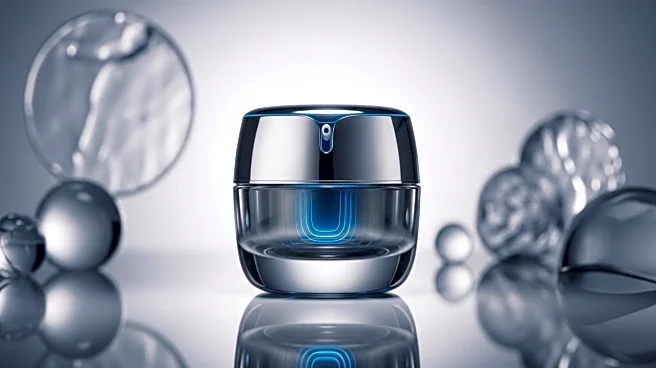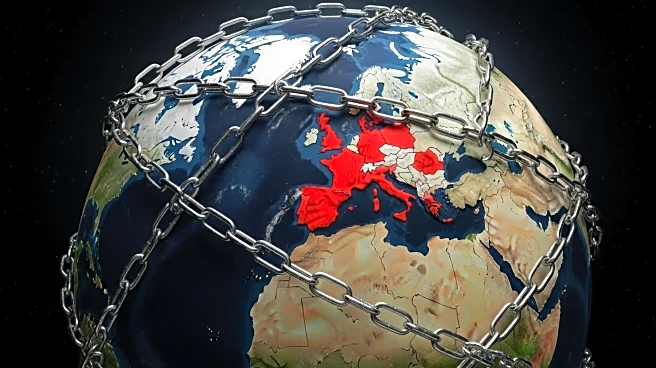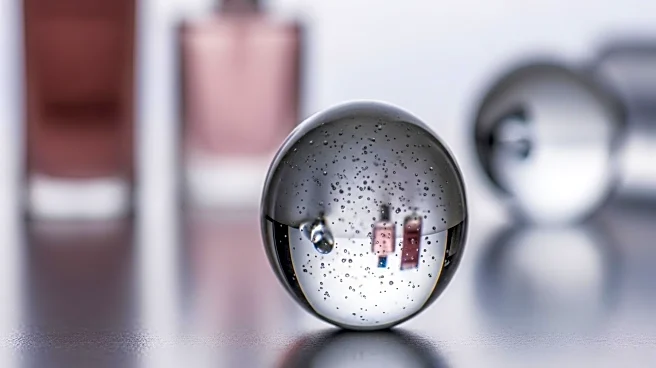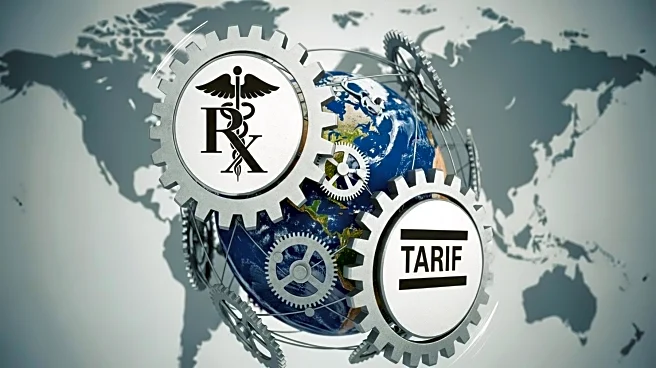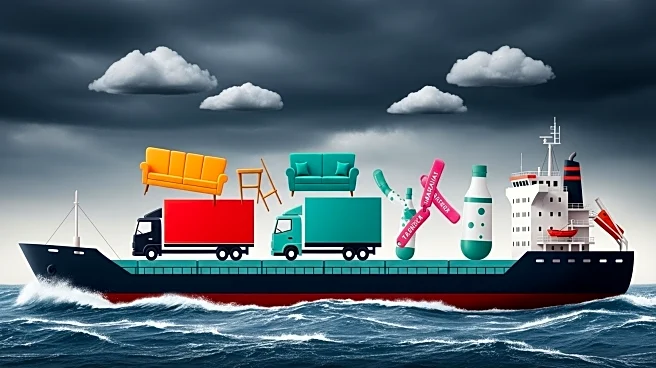What is the story about?
What's Happening?
The European Union's regulation on microplastics, adopted nearly two years ago, is exerting pressure on North American cosmetics brands to innovate sustainable alternatives. The regulation, part of the EU REACH framework, includes transitional periods for different product types, with deadlines ranging from 2027 to 2035. North American manufacturers are urged to view these periods as a roadmap for reformulation, focusing on biodegradable alternatives that meet regulatory requirements. The regulation's impact is significant for brands with international footprints, as compliance becomes increasingly urgent. Lauren Leonard, global market development manager at Eastman, emphasizes the need for proactive R&D investment to replace synthetic polymer microparticles without compromising product performance.
Why It's Important?
The EU's microplastics regulation is pivotal for North American beauty brands, as it drives innovation in sustainable ingredients. Brands exporting to Europe or involved in global supply chains must adapt to remain competitive. The regulation aligns with growing consumer demand for biodegradable beauty solutions, presenting opportunities for brands to gain a competitive edge through strategic ingredient selection. However, replacing microplastics poses challenges, as performance must not be compromised. The regulation also influences U.S. brands indirectly, as global standards and consumer expectations converge, necessitating greater transparency and compliance with evolving regulations like the Modernization of Cosmetics Regulation Act (MoCRA).
What's Next?
North American beauty brands are expected to continue investing in R&D to develop biodegradable alternatives that comply with EU regulations. As deadlines approach, brands must align formulation planning with EU timelines to avoid regulatory complexities and limited access to compliant ingredients. The focus will be on creating solutions that meet consumer expectations for both product performance and environmental impact. Certifications such as COSMOS, RSPO, and Fair Trade will play a larger role in ingredient sourcing and product positioning, as retailers and private-label buyers demand greater sustainability. Brands that act now can drive more sustainable innovation and maintain competitiveness in the global market.
Beyond the Headlines
The EU microplastics regulation highlights the broader trend of sustainability-led innovation becoming expected rather than optional. Brands are rethinking ingredients and formulations to integrate regulatory compliance while delivering superior product performance. This shift reflects a growing consumer demand for transparency and environmentally responsible products. The regulation also underscores the importance of global regulatory alignment, as North American brands must consider international standards even when selling domestically. The focus on sustainability is reshaping the beauty industry, driving innovation in materials science and encouraging brands to prioritize environmental impact alongside consumer satisfaction.
AI Generated Content
Do you find this article useful?
